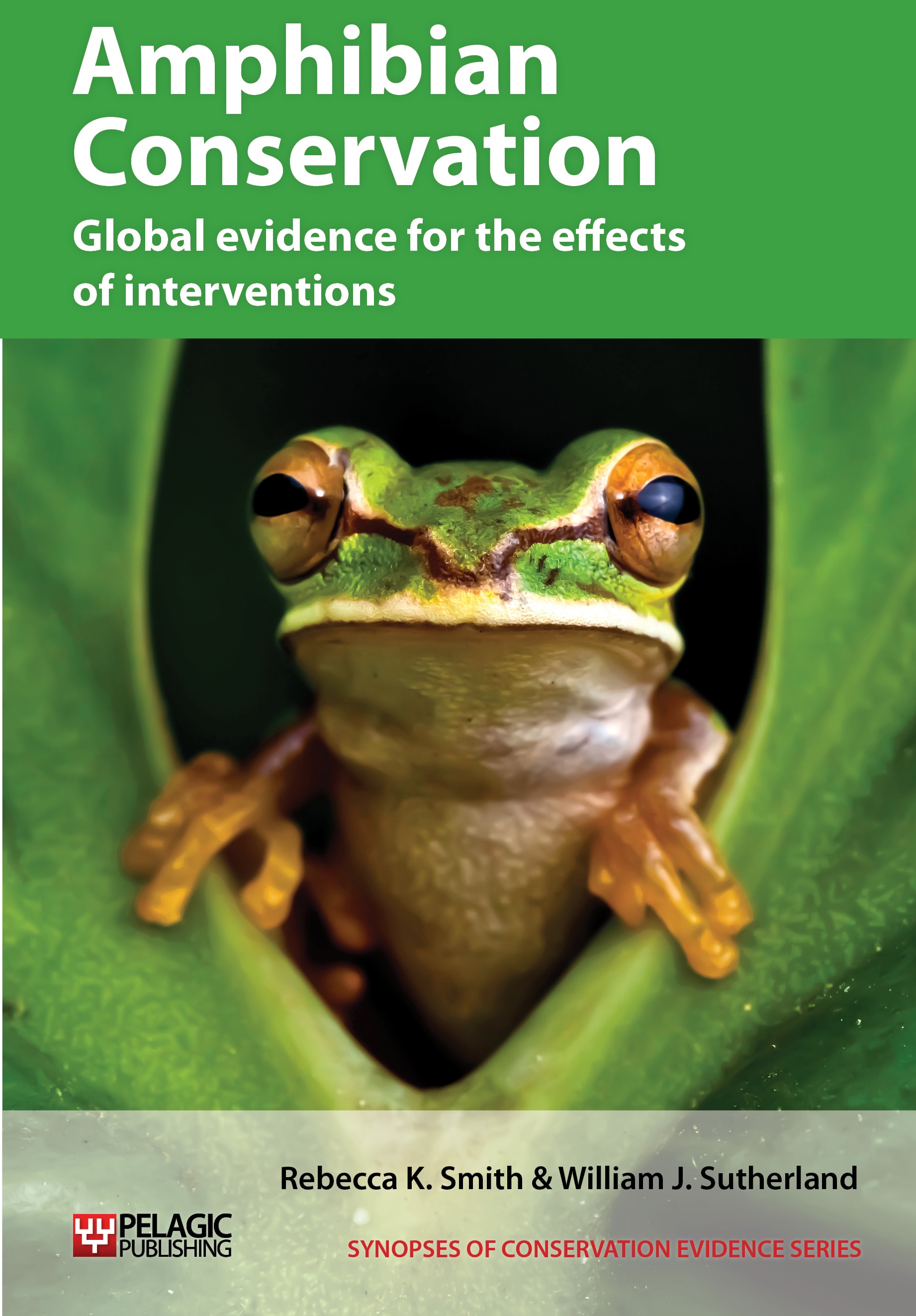Add lime to water bodies to reduce acidification
-
Overall effectiveness category Trade-off between benefit and harms
-
Number of studies: 5
View assessment score
Hide assessment score
How is the evidence assessed?
-
Effectiveness
47% -
Certainty
50% -
Harms
50%
Study locations
Supporting evidence from individual studies
A replicated controlled before-and-after study in 1987–1989 of eight acidic moorland ponds in a Nature Reserve in central Netherlands (Bellemakers & van Dam 1992) found that adding limestone decreased fungal infection of moor frog Rana arvalis eggs. Fungal infection rate decreased from 75–100% pre-treatment and in unlimed ponds to 0–25% in limed ponds. No differences were found between temporary and permanent ponds. Removal of Sphagnum moss had no effect on infection rate. Ponds were 1–3 m2 in size and 13–43 cm deep. In March 1988, powdered limestone was added to four ponds (15–48 kg; grain <3 mm). Sphagnum moss and most organic sediment had previously been removed from two of the ponds. An additional two ponds were controls and two just had Sphagnum removed. Each treatment had a permanent and temporary (re-limed annually) pond. Fungal infection of eggs was estimated for entire ponds every two weeks in March–May.
Study and other actions testedA before-and-after study in 1983–1989 of a heathland pond in Hampshire, UK (Banks et al 1983) found that adding limestone temporarily increased breeding by natterjack toads Bufo calamita. The pond was used for breeding more frequently while it was being limed (1–9 vs. 0–3 spawn strings), but tadpole mortality was high and metamorphic success low and toads abandoned the pond before liming ceased. A naturally acid pond (735 m2) had 25 kg of powdered limestone added annually in April (1983–1989). Toads were monitored before, during and after the intervention, once every 10 days in March and August each year.
Study and other actions testedA controlled before-and-after study in 1985–1989 of two acidic upland ponds in England, UK (Beattie et al 1993) found that adding limestone resulted in a significant increase in egg and larval survival of common frogs Rana temporaria. Egg survival increased from 0–22 to 69–93% the season after liming, but decreased the following year (93 to 79%). The treated pond had significantly higher egg survival, but also significantly higher numbers of abnormal eggs at day 14 than the control (3.0 vs 2.4%). At least 2% of eggs in limed ponds produced metamorphs. In 1988 and 1989, 20 egg clumps were removed from a pond and each halved. Half was returned to the original pond, which had powdered limestone spread over its surface (250 g/m2; 70 m2). Half were placed in a control pond (160 m2), where frogs had not spawned since 1975. Both ponds received limestone in 1989 (333 mg/L). Eggs were removed at days 7, 14 and 19 and reared in the lab or a container in the ponds. Larvae were counted in ponds in July–August.
Study and other actions testedA before-and-after study in 1972–1995 of ponds at three heathland sites in England, UK (Denton et al 1997) found that adding limestone to ponds resulted in the establishment of a translocated population of natterjack toads Bufo calamita at one site, metamorphosis at a second, but no population increase at the third site. The translocated population was dependent on limed ponds at the one site. At the second site, metamorphosis occurred at several previously acidic ponds. However, at the third site, the population did not increase (see (2)). Three sites received minimal powdered limestone (to raise pH to 7) in early spring. At one site, silt (with accumulated sulphate) was removed during the summer (pH increase: 4.5 to 5.5). Pond creation, vegetation clearance and establishment of livestock grazing were also undertaken at some sites. Ponds were monitored by counting spawn strings and estimating toadlet production.
Study and other actions testedA replicated, site comparison study in 1985–2006 of 20 sites in the UK (McGrath & Lorenzen 2010) found that natterjack toad Bufo calamita populations increased with species-specific habitat management including adding limestone to ponds. In contrast, long-term trends showed population declines at unmanaged sites. Individual types of habitat management (aquatic, terrestrial or common toad Bufo bufo management) did not significantly affect trends, but length of management did. Overall, five of the 20 sites showed positive population trends, five showed negative trends and 10 trends did not differ significantly from zero. Data on populations (egg string counts) and management activities over 11–21 years were obtained from the Natterjack Toad Site Register. Habitat management for toads was undertaken at seven sites. Management varied between sites, but included pond creation, adding limestone to acidic ponds, maintaining water levels, vegetation clearance and implementing grazing schemes. Translocations were also undertaken at seven of the 20 sites using wild-sourced (including head-starting) or captive-bred toads.
Study and other actions tested
Where has this evidence come from?
List of journals searched by synopsis
All the journals searched for all synopses
This Action forms part of the Action Synopsis:
Amphibian Conservation
Amphibian Conservation - Published 2014
Amphibian Synopsis





)_2023.JPG)














